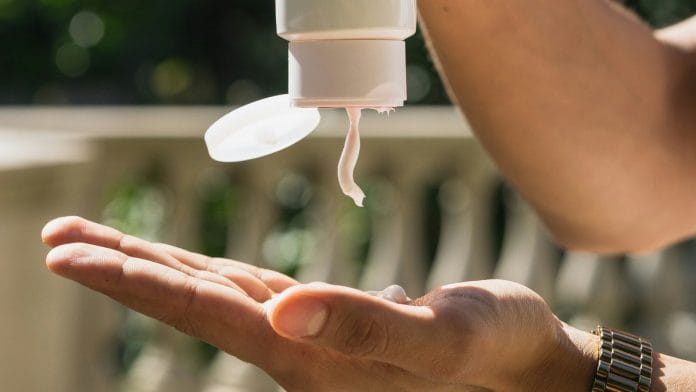With the scorching summer weather and very little rainy respite coming in for the next few days, many of my patients are concerned about tanning. Most of them avoid it as much as they can by staying indoors.
But, are tans really that bad?
Read on and find out.
Tanning: what is it, really?
Tanning is the process by which your skin colour darkens; becomes more tanned. This occurs due to exposure to ultraviolet (UV) radiation from the sun or artificial sources. UV radiation stimulates the production of melanin, a pigment in the skin. Melanin absorbs and dissipates UV radiation, protecting skin cells from DNA damage, which can lead to skin cancers. The increased production and accumulation of melanin result in the skin darkening, commonly referred to as a tan.
It’s similar to the Meirowsky phenomenon, where certain individuals experience increased skin darkening depending on their skin type.
Now, tanning is not all bad; I would urge you to think of it as a gift to the human body to protect our skin and ourselves from the harmful effects of sunburns and the dreaded cancer. The minute your body realises that it’s exposed to harsh UV rays, melanin jumps in to protect your skin by covering the skin’s cells with a superficial layer.
In the long term, adequate melanin production helps stave off potentially life-threatening skin diseases.
That’s not so bad now, is it?
How to avoid tanning
Use sunscreen: Applying a broad-spectrum sunscreen with a high SPF (30 or above) is crucial. Reapply every two hours, or more frequently if swimming or sweating, and do not forget the back of your neck and ears.
Wear protective clothing: Long-sleeved shirts, pants, wide-brimmed hats, and UV-protected sunglasses can provide a physical barrier against UV rays. The skin around your eyes is particularly thin and sensitive. By blocking them, UV-protected sunglasses help shield your delicate skin from damage. Additionally, avoid wearing light colours as they absorb a lot more radiation than darker colours, and always cover your arms.
Seek shade: Avoid direct sun exposure, especially between 10 am and 4 pm when UV radiation is at its peak. Seek shade under trees, shelters, or protect yourself with an umbrella.
Eat sunscreen: Please don’t take this literally! Just like you use sunscreen to protect your skin from the outside, antioxidant-rich foods protect your skin from the effects of the sun from the inside. My simple rule of thumb is — RYGP; red, yellow, green, and purple. Fruits and vegetables of these colours are rich in antioxidants; tomatoes, spinach, kale, blueberries, strawberries, etc. are packed with antioxidants that have been known to reduce sunburn and increase the skin’s defence against UV radiation.
Vitamin C in diet: Vitamin C needs a separate section because of how effective it is in protecting your skin against harmful UV radiation. It is a potent antioxidant that promotes skin regeneration and fights free radicals caused by UV exposure. So, during the summer, make sure you eat a lot of oranges, bell peppers, broccoli, Brussels sprouts, etc.
Shower twice a day: A morning shower cleanses your skin of the products applied the previous night, and an evening shower removes sunscreen, sweat, and pollutants accumulated throughout the day.
Use a loofah: Exfoliation is key in reducing the visible effects of tanning. Exfoliating sun-exposed areas using a gentle loofah about 2-3 times a week can help remove dead skin cells, promote skin regeneration, and improve skin texture. And always avoid vigorous scrubbing that can damage the skin.
Avoid harsh chemicals: Avoid spraying harsh chemicals directly onto your skin, as this attracts more UV rays and leads to a host of unwanted issues like dermatitis, excessive sweating, allergies acting up, and, of course, tanning.
Beat the tan: My favourite homemade scrub
If you’re looking to reduce tanning naturally, there are several home remedies that can help. Here are the instructions for a quick and favourite home-made scrub that will help you reduce the effects of tanning:
- In a bowl, combine the walnut powder, lemon juice, tomato juice, and gram flour. Mix well to form a smooth paste.
- Cleanse your face and the affected areas with a mild cleanser and pat dry.
- Apply the mixture evenly to the tanned areas of your skin.
- Gently massage the mixture into your skin using circular motions for about 5 minutes. This helps in exfoliating dead skin cells.
- Let the mask sit and dry on your skin for about 20-30 minutes.
- Wash it off with lukewarm water — not hot, not cold, but always lukewarm water.
- Last step is to moisturise your skin to keep it hydrated.
If you suffer from dry skin, make sure to include some curd as well. Please remember home remedies are not one-size-fits-all; it really depends on your skin tone. And as I have said for the last 13 years, always consult your trusted dermatologist to understand your skin type before applying anything on it.
Preventing tanning and sunburn involves a combination of protective measures like sunscreen, clothing, and a diet rich in antioxidants. However, understanding melanin and its protective role can help you appreciate the importance of these measures. If sunburn occurs, numerous home remedies can provide relief and support healing; just make sure your dermatologist puts you on the right path for it.
Dr Deepali Bhardwaj is a dermatologist, anti-allergy specialist, laser surgeon and internationally trained aesthetician. She tweets @dermatdoc.
(Edited by Prashant)







Easy & quick to follow . The much needed summer tan information .
Great beautiful information… Dr. Deepali u r awesome
Advised in very simple and easy to do remedies.